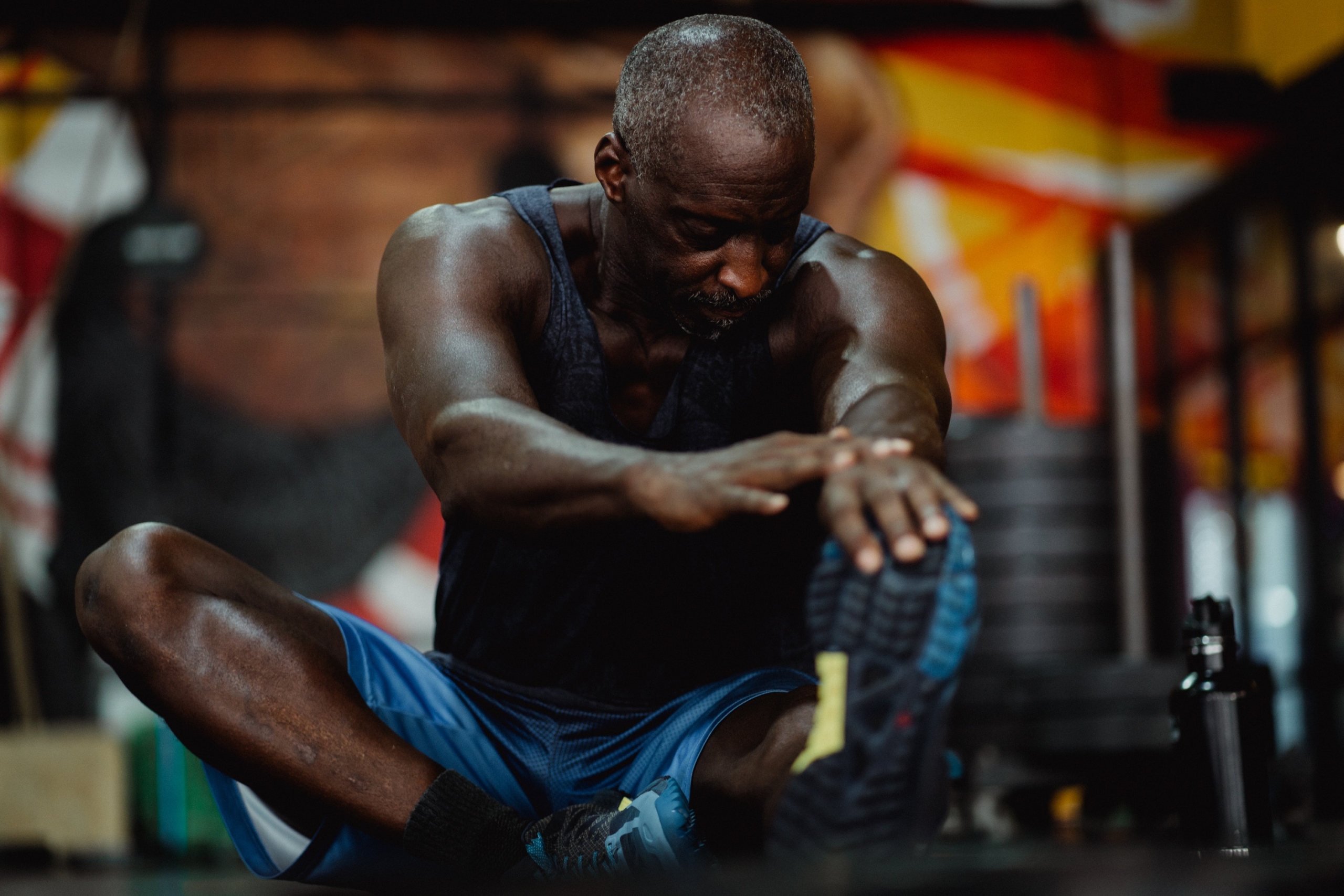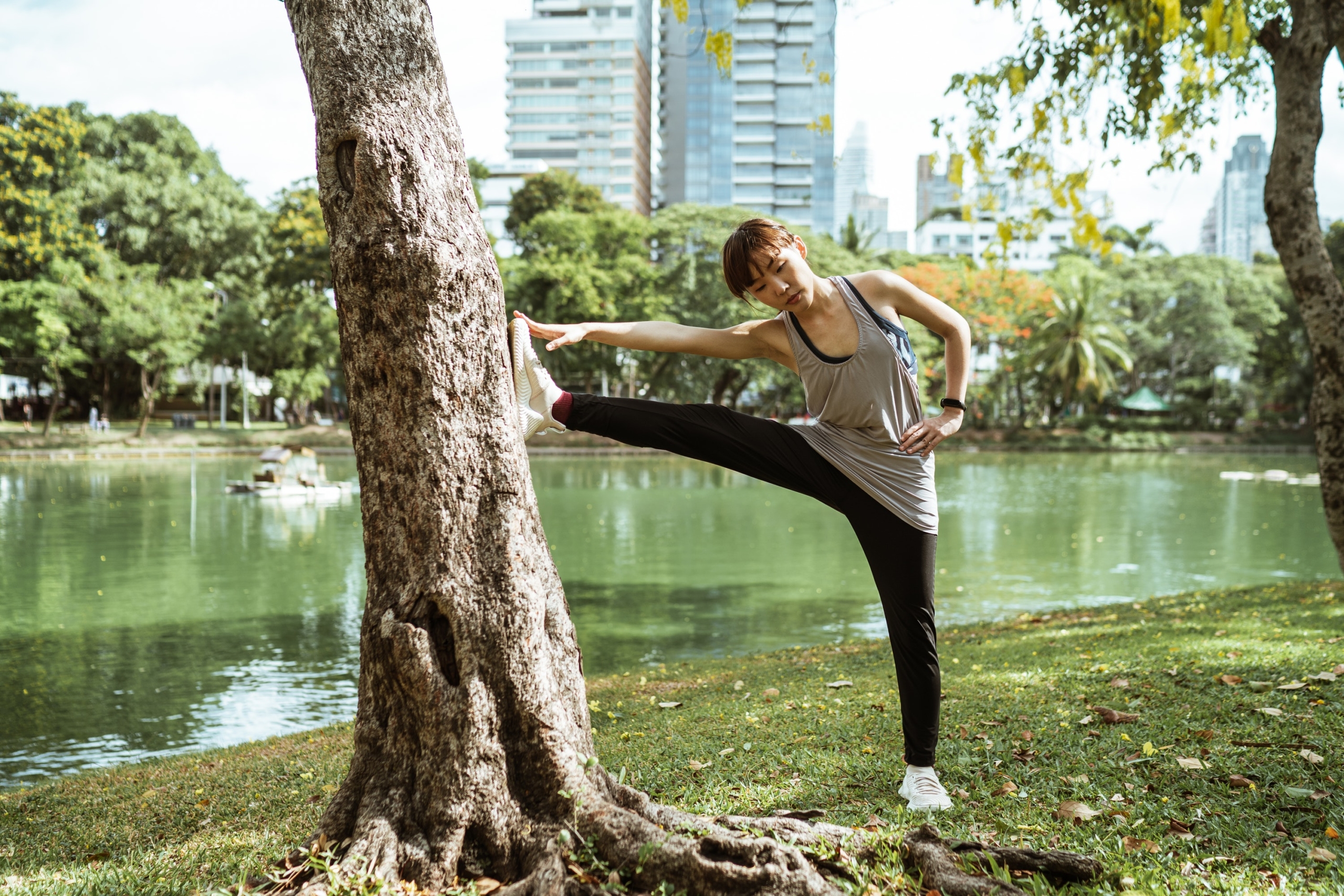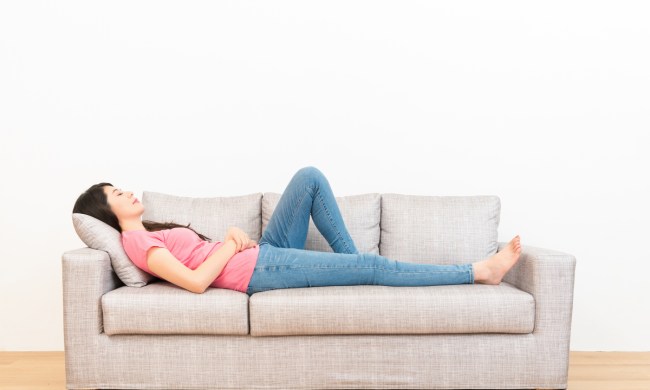So you’ve started a running routine, and everything feels great–endorphins are flowing, your body is energized, and you feel like you can take on the world. Then, the soreness sets in.
24 to 48 hours after a run, those muscles that felt so great a day ago start to cramp, and it feels like multiple vices squeezing your body without mercy. Okay, that may be a little dramatic, but, indeed, beginners and expert runners alike deal with post-run soreness, and serious muscle aches can impact your training schedule.
This pain is called “delayed onset muscle soreness,” and is more common for beginners, inconsistent runners, and those who have increased the intensity or length of a run. While this soreness usually goes away by itself after a couple of days, you don’t have to wait days for relief. Below, take a look at four tension-releasing exercises that can help you avoid post-run muscle soreness in your calves, hips, and hamstrings.

It’s not just your legs
Running is a full-body exercise, so it’s no surprise that many runners find that their necks, shoulders, and backs, can hurt after an especially grueling run.
While a poor running form is usually the cause for this type of pain, other issues such as clenching your fists, looking down at the ground, hunching your shoulders, pumping your arms across your body, or jutting your head forward while running can contribute to tension and pain in your spine. While stretching relieves this pain as well, you can avoid soreness in these areas altogether by breaking those common bad habits
Post-run stretches
Now, on to the fundamentals: Remember that after a run, especially if you’ve decided to go a little farther than usual, it’s essential to engage in post-run stretches for a minimum of ten minutes. During these stretches, focus on your hips, hamstrings, calves, and quads, and pay special attention to anything else that feels tight.
Calves
Your calves are located on the back of your lower leg and are made up of two different muscles, the gastrocnemius and the soleus. If your calves are too tight, it can change your running gait and lead to injuries.
To stretch these muscles, place your hand on the back of a chair or a wall to support yourself. Then, step back with one foot so that your feet are staggered. While keeping your feet flat on the floor, bend your knees, and thrust your hips forward until you feel the calf muscles in your rear leg stretching. Hold this position for 30 to 45 seconds and then switch legs.
Quadriceps
Your quadriceps are at the front of your thighs and are the third-largest muscle group in the body. It is crucial to keep these muscles limber because when they tighten up, you run the risk of a knee injury.
To stretch out these muscles, place your hand on the back of a chair or wall to steady yourself. Bend one knee, grab your foot, and pull it up behind you. Your knee should be pointed straight down toward the floor and the heel of your foot should be next to your buttocks. To increase the intensity of this movement, slowly push your hips forward. Hold this position for 30 to 45 seconds and then release. Switch legs and repeat.

Hamstrings
Your hamstrings are located in the back of your upper leg and are composed of the semitendinosus, semimembranosus, and biceps femoris muscles. When these muscles become too tight, it can lead to pulled muscles and eventually lower back problems.
To prevent soreness in the hamstrings, lie on your back and bend your knees, keeping your feet flat. Slowly raise one leg as straight as possible. Reach up with your hands and “walk” them up the front of your leg as high as you can go. Grasp the back of your leg and gently pull it back toward your torso. Once you’re in a position where you feel a stretch without pain, hold it for 30 to 45 seconds, then return to the starting position. Switch legs and repeat.
Piriformis
The piriformis is located behind the buttocks and near the hips. This small muscle is activated when you walk, maintain balance, and shift weight from one foot to the other. When this muscle spasms or becomes too tight, your sciatic nerve can become irritated, possibly causing pain in your lower back, thighs, and glutes.
To maintain mobility in the piriformis, lie face up with your knees bent and feet flat. Place your right ankle over your left knee, then clasp your hands behind the left thigh. Slowly pull your leg toward your chest until you feel the stretch deep in the glutes and hold for 30 to 45 seconds. Return to your starting position, switch legs and repeat.
Time to run!
Whether you’re a beginner or an expert, post-run muscle soreness is a fact of life. However, by paying attention to the instructions above, you’ll be well on your way to understanding how to make the most of your recovery so you can get back to pounding the pavement (or the treadmill).
If you experience chronic, serious pain that doesn’t fade after rest, consult a healthcare professional before continuing any physical activity.
BlissMark provides information regarding health, wellness, and beauty. The information within this article is not intended to be medical advice. Before starting any diet or exercise routine, consult your physician. If you don’t have a primary care physician, the United States Health & Human Services department has a free online tool that can help you locate a clinic in your area. We are not medical professionals, have not verified or vetted any programs, and in no way intend our content to be anything more than informative and inspiring.


